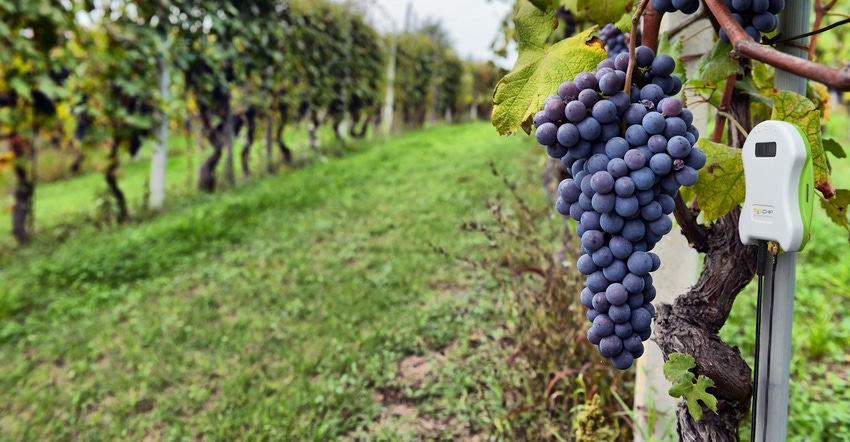January 9, 2017

There's a lot of talk these days about the Internet of Things with information web-available for your use. For agriculture this could be big business for farmers, as well as sensor suppliers, but there are some challenges to getting real-time field measurements and they revolve around energy. Powering those sensors in the field can be a challenge, but an Israeli company has the solution - how about a solar panel on a computer chip?
Sol-Chip has created a wireless solar tag that can be connected to a sensor. This system then sends data from the sensor to a central hub where it can be sent to the web. The company recently rolled out the Sol Chip Comm system which includes an autonomous, wireless, solar tag for enabling precision ag and irrigation.
The device is an ultra-compact, maintenance-free, solar powered wireless tag that can power a range of sensors and send that information to the cloud. But using the word "solar" with these devices may confuse potential buyers.
Farm Industry News talked with Zack Sharon, vice president, sales, about the new devices and just how they work. "These are not really solar devices," he notes. "They're energy harvesting devices that can use any light to create energy and store it for later use. If it's visible light - indoor and outdoors - they work. They're quite sensitive to light and they don't have to be pointed to the sky to work."
With that technology to power sensors, Sharon explains that the company has a base solution and platform that provides low-cost, maintenance free systems. He says the company is targeting a continual 10-year service life for these sensor systems in the field.
The key is the new technology that Sol-Chip brings to the table. These low-power sensors can use available light for power to communicate with a central station. "in terms of the technology, we have a smart solar element that is unique in terms of what we're bringing to the market," Sharon says. "We've made solar robust, and achievable, to work in a range of environments, and no other company in the world can accommodate that."
This Internet of Things platform means a network of sensors can be set up throughout a field collecting real-time data - temperature, soil moisture, and more. Basically if a sensor can be powered by the system - which is achievable - it can be connected to this system. And with this design Sharon explains it is a true install and forget design.
Each sensor can be set up for as little as $100 each for a short-range tag, $120 for a long range tag. The short range, without an external antenna, can reach as far as 2,400 feet (800 meters) while the long-range with the external antenna can reach as far as 5,000 feet (1,500 meters). "We have an installation in Argentina that has a high-gain antenna and the tag can communicate even in a longer range.
And Sharon adds that other approaches rely on batteries, which need to be replaced every few months. Sol Chip’s energy harvesting approach removes the need for batteries, which is not only a savings financially, but also has an environmental benefit.
Currently available solar-powered sensor systems retail for much higher than the Sol-Chip sensors, which Sharon says could be a game changer for crop production. "The traditional cost is as high as $2,000 for a system with conventional solar technology," Sharon says. "With our system you could put six, seven or even nine sensors out to monitor that many zones, and get more accurate readings for a lower cost. This will be very dramatic for farmers."
The cloud-based application for gathering the data is also farmer-friendly providing information collected in a graphical format. Sharon says Sol-Chip partnered with another firm that turns tabular data into something you can read.
You can learn more about the Sol-Chip Comm system at sol-chip.com. The company is working to expand distribution into the United States for 2017.
About the Author(s)
You May Also Like






